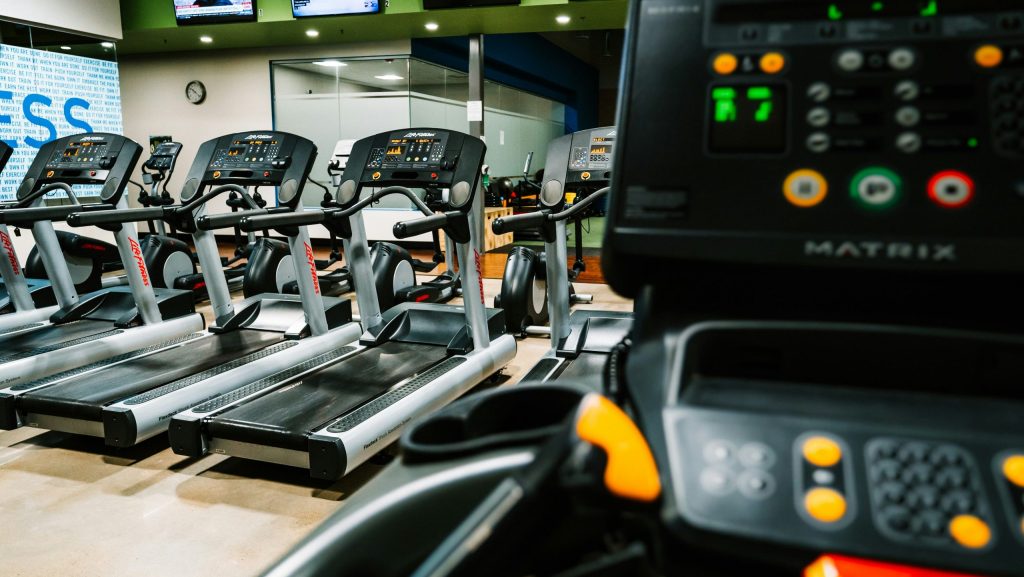Table of Contents
Strength training is a dynamic discipline where even small adjustments can significantly impact performance outcomes. Optimizing repetitions (reps) in workout routines is vital for those advancing beyond beginner levels, as it involves a deep understanding of how variations in reps affect strength, endurance, and muscle growth. This approach to training is crucial for those looking to enhance their physical capabilities and achieve their fitness goals.
Did you know? Manipulating rest periods can increase strength gains by up to 20% according to recent studies, showcasing the importance of recovery in advanced strength training.
Advanced fitness enthusiasts must integrate sophisticated strategies such as Advanced Rep Techniques and Strength Training Optimization into their routines to maximize workout efficiency and promote significant muscle growth. This article provides a detailed examination of these strategies, catering to lifters who are prepared to take their training to the next level. It addresses various goals, from increasing strength and muscle hypertrophy to improving overall athletic performance, by applying strategic manipulation of reps.
Key Topics We Will Cover:
- Understanding Repetition Variability: Exploring how different rep counts impact muscle fibers, facilitating growth and avoiding training plateaus.
- Techniques for Maximal Strength Gains: Examining specific rep techniques designed to maximize strength, including explosive and pause reps.
- Optimizing Rest Periods Between Sets: Analyzing the effects of rest intervals on muscle recovery and how adjusting these can optimize strength and hypertrophy outcomes.
- Advanced Rep Schemes for Experienced Lifters: Discussing complex rep schemes like drop sets, pyramid sets, and supersets, ideal for experienced lifters.
- Monitoring and Adjusting Workouts for Progress: Highlighting the importance of tracking workouts and adjusting based on performance metrics to continually optimize training effectiveness.
By the end of this article, you will not only have a comprehensive understanding of advanced rep optimization strategies but will also be familiar with the scientific principles behind these techniques. This knowledge will empower you to implement these strategies effectively in your routines. Whether you are an athlete or a committed gym-goer, these insights will help you surpass your current limits and reach new fitness peaks.

Understanding Repetition Variability
Repetition variability is a critical strategy in advanced strength training, essential for optimizing workout outcomes. This technique is pivotal for enhancing both muscular endurance and strength and is crucial for ongoing muscle growth and avoiding training stagnation. By strategically varying rep counts, lifters can effectively stimulate their muscles, fostering adaptations that improve performance and physique.
Impact of High vs. Low Reps on Muscle Growth
The choice between high and low rep ranges is crucial for their different impacts on muscle growth and endurance. High rep ranges, generally considered to be sets of 12 or more repetitions, enhance muscular endurance and are linked to increased muscle size due to the higher overall volume, which drives hypertrophy. Low rep ranges, typically fewer than six repetitions, focus on increasing strength by targeting fast-twitch muscle fibers, which are crucial for strength gains and size when trained under high-intensity conditions.
Integrating both high and low rep ranges within a training program is effective for comprehensive muscular development, engaging all muscle fiber types and optimizing muscle response and growth. This dual approach ensures the enhancement of both aesthetic and functional muscle qualities.
Research shows that drop sets can increase muscle activation by up to 50% compared to traditional sets, highlighting their efficiency in muscle hypertrophy.
Benefits of Repetition Shock Techniques
Advancing beyond plateaus in muscle development often requires the use of repetition shock techniques. These methods, such as drop sets, supersets, and rest-pause sets, are designed to extend muscle exertion beyond typical fatigue levels, enhancing muscle fiber recruitment and hypertrophy.
Drop sets, for instance, allow continued exercise beyond the point of muscle fatigue, significantly increasing the workload and stress on the muscle, which leads to greater growth. Supersets, which combine two exercises back-to-back without rest, increase workout intensity and maximize muscle damage and growth during recovery. Rest-pause sets break a set into several mini-sets with short rest intervals, increasing the intensity and allowing heavier weights over more repetitions.
Periodization Strategies for Rep Variability
Periodization involves the systematic planning of physical training, adjusting rep schemes over time to manage fatigue and optimize muscular growth and performance. This planning can be segmented into macrocycles (typically a year), mesocycles (several weeks to months), and microcycles (about a week).
Effective periodization for rep variability balances phases of high-volume, low-intensity training with phases of low-volume, high-intensity training to optimize gains and recovery. This strategic variation not only aids in enhancing strength and muscle size but also prepares athletes for peak performance at critical times.
Implementing periodization requires understanding long-term training goals to ensure each phase builds upon the last, contributing to the ultimate objectives, whether they involve muscle growth, strength, endurance, or a combination of these elements.
| Phase | Focus | Typical Rep Range |
|---|---|---|
| Preparatory | Building base endurance | 12-15 reps |
| Intensity | Increasing strength | 3-6 reps |
| Taper | Peaking performance | 1-3 reps |
A deep understanding and application of repetition variability allows advanced lifters to continually adapt and evolve their training approaches. This methodical approach helps maximize gym time efficacy, leading to better performance and substantial athletic improvements.

Techniques for Maximal Strength Gains
Targeted strength training techniques are crucial for those aiming to maximize their strength gains. This section details several methods specifically designed to enhance muscular power and stability through varied types of reps and loading patterns.
Role of Explosive Reps in Strength Development
Explosive reps are essential in strength training for activating fast-twitch muscle fibers, which are critical for producing quick, powerful bursts of strength. Incorporating explosive reps into a training routine allows lifters to significantly improve their power output. This output is vital not only for lifting heavier weights but also for sports requiring sudden strength bursts.
The method involves lifting a weight forcefully during the concentric phase and controlling the movement during the eccentric phase. Such practices maximize neuromuscular activation, fostering greater strength gains. Training sessions focused on explosive movements typically involve lower rep counts to preserve the quality and intensity of the exercise, preventing fatigue that could compromise effectiveness.
- Rapid activation of fast-twitch muscle fibers: Maximizes power and speed.
- Enhanced neuromuscular efficiency: Improves coordination between nerves and muscles.
- Increased metabolic demand: Leads to higher energy expenditure during workouts.
Integrating Pause Reps for Muscle Tension
Pause reps significantly enhance muscle tension and strength by incorporating a stop at a lift’s peak contraction point, holding the weight stationary for a set period before completing the movement. This pause increases the time under tension, a key factor in muscle growth and strength.
Benefits of pause reps include improved muscular control and endurance, strengthened connective tissues, and greater activation of stabilizing muscles. Adding a pause eliminates momentum, forcing muscles to maintain intense contractions, enhancing fiber recruitment, and promoting strength improvements. Pause reps are effective in traditional lifting routine plateaus, altering the muscles’ stimulus and prompting further adaptation.
Eccentric Loading for Strength Enhancement
Eccentric loading, focusing on the muscle elongation phase during exercises like bench presses or squats, is pivotal for building strength and muscle hypertrophy. This phase induces extensive micro-tears in the muscle fibers, initiating muscle repair and growth during recovery.
Eccentric training is particularly effective because it can generate greater forces compared to concentric actions, thereby fostering significant strength and muscle size gains. Proper eccentric loading involves using heavier weights than those manageable in a concentric phase, often requiring spotters or assistance devices for safety. This method emphasizes the controlled lowering of weights, maximizing tension and fiber damage for optimal growth.
“Eccentric training can increase strength up to 1.3 times more effectively than concentric training alone, making it a powerful tool for muscle growth and rehabilitation.”
Implementing advanced strength training techniques, such as explosive reps, pause reps, and eccentric loading, is vital for substantial strength increases. Each method contributes uniquely to enhancing training effectiveness and overall muscle development. Delving into these techniques equips lifters to harness their full strength training potential and achieve significant gains, providing the mechanics necessary for elevated performance and optimal results.

Optimizing Rest Periods Between Sets
Managing rest periods between sets is a critical factor in strength training, directly impacting muscle growth and overall performance. This discussion provides detailed insights on optimizing these intervals to achieve specific fitness goals by manipulating rest durations effectively.
Short vs. Long Rest Periods: Benefits and Drawbacks
The length of rest periods in strength training significantly affects the efficacy of a workout regime. Short rest periods, often under 60 seconds, are common in high-intensity training circuits where the goal is to increase muscular endurance and calorie expenditure. These intervals maintain elevated heart rates, enhancing cardiovascular benefits and promoting fat oxidation. However, the drawback is reduced muscle recovery time, potentially decreasing the weights lifted in successive sets and limiting strength gains.
Conversely, long rest periods, typically lasting three to five minutes, are essential in workouts focused on strength and power. These longer intervals allow muscles to recover more fully, essential for maximum performance in strength-based exercises. The complete recovery ensures the replenishment of ATP stores, critical for explosive muscular contractions, thereby optimizing performance in subsequent sets.
The choice between short and long rest periods should align with specific training objectives. For hypertrophy, moderate rest periods—approximately 60 to 90 seconds—may offer the ideal balance, allowing sufficient recovery for muscle growth while maintaining a heightened metabolic rate.
“Studies indicate that optimal rest periods for hypertrophy are typically 60 to 90 seconds, maximizing anabolic hormonal responses necessary for muscle growth.”
Rest Periods for Hypertrophy vs. Strength
Different training goals, such as hypertrophy and strength, necessitate varied approaches to rest period management. Hypertrophy training benefits from moderately long rest periods that allow a high work volume crucial for muscle growth, yet keep stress levels high enough to stimulate anabolic responses.
In contrast, strength training focuses on increasing maximum lifting capacity and requires longer rest periods. These ensure that each set is performed with maximal force, crucial for neuromuscular adaptation and strength enhancement. Athletes training for strength often prioritize complete recovery to maximize the weights lifted, necessitating extended intervals compared to hypertrophy-focused routines.
Tailoring Rest Periods to Training Goals
Customizing rest intervals to match specific training goals and recovery capabilities can significantly enhance workout outcomes. Short rest periods may benefit endurance athletes by improving stamina and fatigue resistance, whereas longer rests better suit those focusing on heavy lifting or power movements, allowing for peak performance.
The adjustment of rest periods also depends on an individual’s fitness level and recovery rate. Advanced athletes might manage shorter rest intervals at higher intensities than beginners. Additionally, factors such as diet, hydration, and sleep quality are crucial in determining the optimal length of rest, as they influence recovery speed between sets.
| Training Objective | Recommended Rest Period |
|---|---|
| Muscle Endurance | 30-45 seconds |
| Muscle Hypertrophy | 60-90 seconds |
| Maximal Strength | 3-5 minutes |
| Explosive Power | 3-5 minutes |
Strategically managing rest periods is vital for aligning with fitness objectives and achieving optimal performance and recovery. Whether the goal is to enhance muscle hypertrophy, increase strength, or improve endurance, adjusting rest intervals accordingly plays a pivotal role in the success of any training regimen. Exploring how to optimize rest periods equips you with the necessary knowledge to ensure your training regimen not only meets but exceeds your fitness goals.

Advanced Rep Schemes for Experienced Lifters
Advanced rep schemes are crucial for experienced lifters aiming to enhance training efficiency and maximize muscle engagement, strength, and hypertrophy. This section delves into various advanced techniques, such as drop sets, pyramid training, and supersets, designed to intensify workouts and optimize training outcomes.
Implementing Drop Sets for Intensity
Drop sets are an effective technique used to push muscle groups past their usual fatigue limits, thereby enhancing muscle hypertrophy and endurance. This method involves performing an exercise to failure, then reducing the weight and continuing to do more reps until failure is reached again. This process may be repeated several times to significantly increase the volume of work done in a short period, which elevates metabolic stress and muscle damage—key factors in muscle growth.
The main advantage of using drop sets is their ability to induce a high level of intensity and muscle overload, which can lead to increased muscle size and endurance. This technique is particularly beneficial for targeting smaller muscle groups that may require additional stimulus to grow, such as biceps and triceps. Drop sets are widely utilized by bodybuilders and advanced fitness enthusiasts for their efficiency in breaking through growth plateaus.
“Drop sets can increase muscle activation by up to 40%, enhancing endurance and size more effectively than traditional sets alone.”
Benefits of Pyramid Sets in Advanced Workouts
Pyramid training involves progressively increasing or decreasing the weight with each set, while adjusting the number of reps accordingly. Starting with lighter weights and higher reps and either ascending in weight and descending in reps, or vice versa, allows for comprehensive muscle stimulus. This method combines high-volume and high-intensity work within the same workout, effectively targeting both muscular endurance and strength.
- Progressive Overload: Gradually increases weight to challenge and enhance strength.
- High Volume Training: Engages muscles with higher reps at lower weights to boost endurance.
- Adaptation Prevention: Varies the workout intensity and volume to continuously challenge the muscles and prevent fitness plateaus.
Combining Compounds and Isolation in Supersets
Supersets combine two exercises performed consecutively without rest, often targeting the same muscle group to increase intensity or opposing muscle groups to allow one to rest while the other works. This method can be executed by pairing compound movements, like squats or bench presses, with isolation exercises, such as bicep curls or triceps extensions. The combination of compound and isolation exercises in supersets increases workout intensity, enhances metabolic stress, and promotes greater muscle fatigue, leading to improved muscle hypertrophy and endurance.
Supersets are effective for increasing workout efficiency, allowing more work to be completed in less time. They also maintain increased blood flow to the muscles, which helps supply nutrients and oxygen while facilitating metabolic waste removal. This method is particularly useful for enhancing muscle definition and size, as well as improving muscular balance and symmetry.
Mastering advanced rep schemes such as drop sets, pyramid training, and supersets enables lifters to challenge their muscles effectively and achieve substantial gains in strength and muscle size. Exploring these techniques in detail provides the necessary tools to refine strength training approaches and maximize performance outcomes, ensuring lifters can reach and surpass their fitness goals.

Monitoring and Adjusting Workouts for Progress
Effective training involves not only dedication and hard work but also the systematic monitoring and timely adjustment of workout plans to ensure ongoing progress and achievement of fitness goals. This section highlights the crucial roles of workout logs, performance metrics, and advanced technology in optimizing fitness routines.
Importance of Workout Logs in Tracking Progress
Workout logs are essential for documenting each training session, capturing details such as exercises performed, weights lifted, sets and reps completed, and general observations about the workout. These logs are vital tools for evaluating progress, identifying trends, and making informed decisions about future training directions.
- Historical Data Review: Enables long-term performance trends analysis.
- Goal Setting and Adjustment: Supports structured planning based on past performance.
- Motivation and Accountability: Enhances motivation through visual documentation of progress.
Regularly updating and reviewing workout logs allows athletes and trainers to maintain a clear record of training history, facilitating precise adjustments to the training regimen. This structured documentation helps in setting realistic fitness goals and strategically planning future workouts to incrementally increase intensity or volume as required.
Adjusting Rep Counts Based on Performance Metrics
Adjusting training plans according to performance metrics is vital for enhancing training outcomes. By analyzing data such as rep counts, weights lifted, and recovery times recorded in workout logs or fitness apps, trainers can tailor training programs to better suit an athlete’s evolving needs.
Effective adjustment of rep counts based on performance data ensures the ongoing effectiveness of a training program. For instance, if a lifter consistently completes sets with ease, it might indicate the need to increase the weight or alter the rep scheme to further challenge the muscles and facilitate growth. Alternatively, if performance data shows signs of decreased efficacy or increased difficulty with specific exercises, it may indicate the need for additional recovery time or a reduction in intensity.
“Modern fitness apps can increase workout adherence by up to 30% by providing interactive and personalized training insights.”
Utilizing Technology for Precision in Training Adjustments
The integration of technology in fitness has revolutionized how workouts are tracked and adjusted. Fitness apps and wearable devices provide real-time data on various performance metrics, offering insights that go beyond traditional workout logs. These tools enable a detailed analysis of an athlete’s performance and physiological responses during exercise.
Technology facilitates:
- Real-Time Performance Tracking: Immediate feedback during workouts to adjust intensity on the fly.
- Automated Adjustments: Algorithms analyze performance and suggest workout modifications.
- Remote Coaching: Enables trainers to provide feedback and modify programs based on data shared via apps.
Using technology to enhance training precision helps athletes and trainers make smarter, data-driven decisions that optimize workout efficiency and effectiveness. These digital tools not only streamline the process of tracking and adjusting workouts but also personalize the training experience, adapting in real-time to the needs of the individual.
To maximize the effectiveness of any training program, it is crucial to continually monitor progress and adjust based on comprehensive performance data. By embracing detailed tracking methods and leveraging modern technology, athletes can refine their workouts to better achieve specific fitness objectives, ensuring they are not only working hard but also working smart to achieve optimal results.

Conclusion: Optimizing Reps: Advanced Training Strategies
This article has explored sophisticated strategies for enhancing fitness routines through advanced strength training techniques. We’ve covered a range of topics, each designed to provide actionable insights that help elevate your training from initial planning to ongoing adjustment for sustained progress.
“Transform your training approach today: integrate advanced rep techniques, optimize your rest periods, and continually adjust your workouts based on solid performance data.”
Understanding Repetition Variability: The discussion began with an analysis of how adjusting repetition counts can significantly impact muscle strength and endurance. Using strategies like shock methods and periodization effectively prevents plateaus and keeps the training regimen dynamic and engaging.
Techniques for Maximal Strength Gains: We further explored specific techniques to maximize strength gains, including the use of explosive reps, pause reps, and eccentric loading. These methods are designed to provide a rigorous challenge to the muscles, promoting greater strength and hypertrophy.
Optimizing Rest Periods Between Sets: Optimizing rest periods between sets is essential for maximizing muscle recovery and growth. The article detailed how adjusting rest intervals according to different fitness goals—such as hypertrophy, strength, or endurance—can enhance the overall effectiveness of a workout regimen.
Advanced Rep Schemes for Experienced Lifters: Advanced rep schemes such as drop sets, pyramid sets, and supersets were examined for their role in intensifying workouts and enhancing training efficiency. These strategies are vital for experienced lifters seeking to push their limits and achieve higher levels of muscular engagement and growth.
Monitoring and Adjusting Workouts for Progress: The importance of monitoring workouts through logs and utilizing technology to adjust training plans based on performance metrics was highlighted. This process ensures that fitness routines remain challenging and continue to align with personal fitness goals.
The strategies discussed emphasize the importance of a structured and informed approach to fitness training. By integrating advanced training techniques, optimizing workout components, and employing data-driven adjustments, athletes can greatly enhance the effectiveness and sustainability of their training routines. Embrace these methodologies to not only achieve but also exceed your fitness goals, ensuring that your efforts are as efficient and productive as possible.